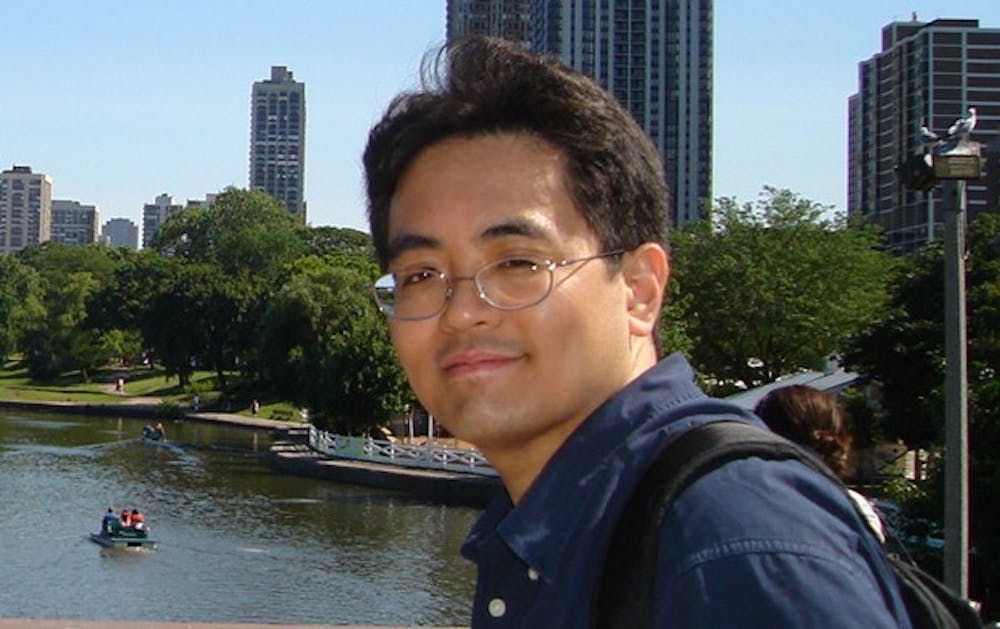 Photo courtesy Robert Yao.
Photo courtesy Robert Yao.“Life gave me a detour,” says Robert Yao, a 34 year-old graduate student enrolled in Arizona State University’s Biomedical Informatics program.
The Biomedical Informatics program (BMI) is a fusion of biology, medicine, and computer science. The idea behind it is to better manage information in the biological and medical field through the use of computer technology.
On Aug. 25, a ribbon-cutting ceremony took place to celebrate ASU’s BMI program moving to join Mayo Clinic on its Scottsdale campus.
Behind the strengthening ties and the advancement of ASU’s Biomedical Informatics program, there are students like Yao, who embody the vision of the department.
Yao moved from Chicago to Phoenix in 2007 to pursue a doctorate in Biomedical Informatics. Before coming to ASU, Yao had completed two years of medical school at Rush Medical College in Chicago.
Inspired by his pediatrician father, Yao chose to follow in his steps and become a pediatrician himself.
After the first two years of medical school, though, Yao hit his detour. He was left bed-ridden from a complicated sickness that left him in pain and weak everyday. Yao’s illness forced him to take an almost three-year medical leave to recover. But during his weakest days, his most passionate and successful work began.
“While I was trying to figure out what was going on with myself … I ended up taking all the medical information from my first two years of medical school and reorganizing it into what I later found out was a translational biomedical ontology.”
If the title leaves you dumbfounded, not to worry, Yao himself had not even realized the intricacy of his creation at first.
To break it down, Yao defines ontology as “a structured way to look at information … or knowledge.”
Basically, he was able to use what he had learned from the first two years of medical school and place it into a template that enabled him to assist his doctors in the diagnosis and treatment of his own sickness
“We actually worked together to figure out what was going on."
Once Yao recovered, he began the process to return to medical school, but his professors saw the incredible potential in what he had started.
Yao’s creation was originally a method to help him organize and understand the class material better in medical college, but after using the design to aid in his own illness, he and his professors realized it was much more.
“They [professors] knew it was a Biomedical Informatics project.”
Not only a project, but a potential doctoral dissertation in an innovative field.
With encouragement from his medical professors, Yao began his exploration of universities across the country that had Biomedical Informatics programs. His hunt for the best program led him to another surprise.
“As I went to visit the programs, I noticed something: every program had someone from that program leaving to come here,” Yao explains.
And where were these other programs? Oh, Columbia, Carnegie Mellon, Harvard – no big deal. Except it was a goldmine for ASU.
Robert Greenes, current chair of the program at ASU’s Ira A. Fulton Schools of Engineering, directed the Biomedical Informatics Research Training program at Harvard.
“He was one of the reasons why I came here,” Yao says. Ultimately Yao decided to follow the lead of talented professors and come to ASU.
When he first arrived, the Biomedical Informatics program was only a Master’s degree, but in one year, it transformed into a doctoral program. With the recent move to Mayo Clinic’s Scottsdale campus, Yao is optimistic about the benefits of ASU researchers working with clinicians.
Still, to truly make the connection work, Yao believes “communication is the biggest piece to this puzzle.” Communication is what Yao does on a daily basis, not just with his progressive project, but also as a leader himself.
In previous years, he served as chair of the Student Advisory Committee for the BMI department. This year, he is student representative and co-chair of the committee.
Looking ahead, Yao intends to complete his project and make it accessible to patients and medical students who are learning about diseases in the body. He says he hopes to “define and structure knowledge about these different diseases and find a way to make a computer do that automatically.”
Yao’s vision is to “help empower people who are patients so that they can better communicate with their doctors what they’re going through.”
The ontology he is developing could be a key to better health care. Yao says he recognizes that the knowledge is there, it is just not communicated in a way that promotes full use of it.
“I see the issue with medical knowledge … a lot of it is disorganized, not well-structured and a lot of it is not well-defined. I believe I have the definition and structure that can help a lot of people.”
Life handed Robert Yao what could have been a permanent detour from his dreams and goals, but it took the poison to make his own medicine.
Contact the reporter at mfidura@asu.edu




